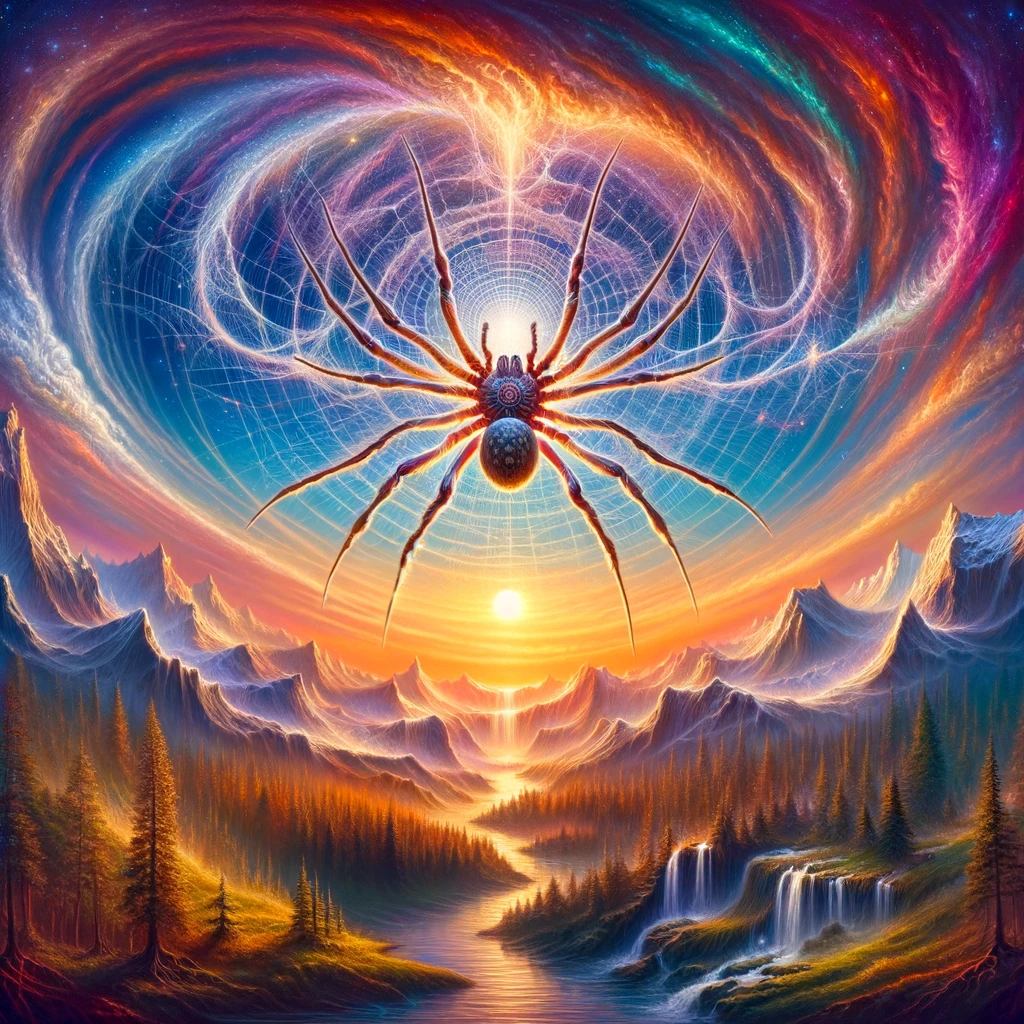
In the rich tapestry of Native American folklore, stories about the creation of the world hold a special place, weaving together the physical and spiritual realms into narratives that have been passed down through generations. Among these, the legend of a spider dancing to create the world is a profound testament to the creativity, resilience, and interconnectedness of all life. This story, while varying in details across different tribes, underscores the spider’s significant role in the cosmology of Native American cultures.
The Legend
At the heart of this creation myth is a spider, often depicted as a wise and ancient being, possessing the power and knowledge to bring the universe into existence. Before the world as we know it came to be, there existed only a vast expanse of water and a dark, endless sky. In this primordial void, the spider embarked on a solitary dance, a ritual of creation that would lay the foundation for life itself.
As the spider danced, it spun a web, delicate yet strong, that stretched across the void. With each movement, the web grew, weaving the fabric of the universe. The dance was intricate and purposeful, with the spider’s eight legs moving in harmony to spin threads of cosmic energy. These threads interlaced to form the elements of nature: the earth, the sky, the stars, and all living creatures.
The spider’s dance was not only an act of creation but also a symbol of the interconnectedness of all things. The web, with its intricate patterns and delicate threads, represented the delicate balance of the natural world, where every element and creature is connected and dependent on one another. The legend teaches that just as the spider’s web supports dewdrops, so too does every part of creation support the whole.
Interpretations and Significance
The legend of the spider’s dance holds deep philosophical and spiritual significance. It teaches the importance of harmony and balance in the natural world and the role of every individual in maintaining the web of life. The spider, often seen as a creator deity or a symbol of wisdom and creativity, is revered for its skill and patience, qualities that are highly valued in many Native American cultures.
This creation myth also highlights the theme of rebirth and renewal, as the act of creation is continuous, with the spider’s dance echoing through time, reminding us of the ongoing cycle of life, death, and rebirth. The web, constantly being spun and sometimes broken, symbolizes the resilience and adaptability of nature and the need for humans to live in harmony with the environment.
Cultural Variations
While the core elements of the spider as a creator are common, details of the legend vary among different tribes. For example, in some versions, the spider is accompanied by other animals or deities who assist or witness the creation. In others, the spider is specifically identified with certain attributes or names, reflecting the unique spiritual beliefs and practices of each tribe.
Despite these variations, the legend of the spider’s dance remains a powerful symbol of creation, interconnectedness, and the sacredness of life. It is a reminder of the wisdom embedded in the natural world and the importance of respecting and preserving the delicate balance of the environment.
Conclusion
The Native American legend of the spider dancing to create the world is a profound narrative that speaks to the heart of human existence and our relationship with the natural world. It embodies themes of creativity, resilience, and interconnectedness, offering a timeless message about the importance of harmony and balance. Through the dance of the spider, we are reminded of the intricate web of life that binds us all, urging us to tread gently upon the earth and honor the connections that sustain us.
